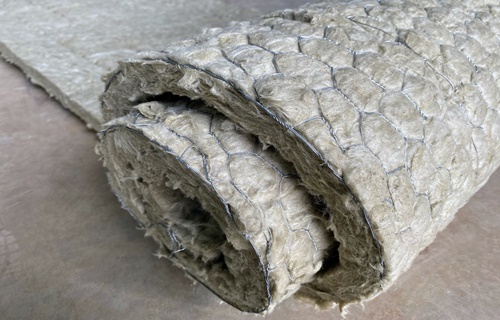Is Asbestos in Felt and Tar Pipe Wrapping a Health Risk?

Utilities have long used felt and hot-applied coal-tar coatings on pipes to mitigate the effects of moisture and corrosion. Until modern and durable layers were developed, many miles of pipe installed throughout the country were wrapped with this insulation during the 1970s and 1980s.
The felt used in pipeline wrap was an asbestos product containing 5%-50% asbestos fibers. The felt wrapping was usually covered by an outer wrapping of tar mixed with asbestos to ensure moldability and heat protection. The oil and gas industry used asbestos felt pipe wrapping primarily for coating its pipelines. Still, the insulation found its way into above-ground applications for special pipings in cooling systems, and the chemical industry applied it for underground hot water and steam piping.
As construction also picked up the insulating modality, some pipes running through homes and industrial buildings were covered with asbestos-containing felt wrapping. Asbestos felt was also a staple in the coal tar enamel method of coating pipes and several piping components, including:
- pipe lagging or pipe wrapping
- plaster on pipe elbows and couplings
- pipe connection components: gaskets, valves, and flanges
Asbestos is a durable, effective, and proven means of protecting surfaces exposed to various corrosive factors. It's why asbestos wrapping covered with tar enamel also insulated steel pipes in civilian construction and industry. One of the reasons for this insulation's longevity and performance was that the asbestos fibers in its mixture formed a barrier impervious to moisture and added strength to the coating.
Health Risks Due to Wear and Tear
Asbestos present in felt and coal-tar wrap underlines the issue of friability and related health concerns such as asbestos-related cancers. It was not until the mid-'80s that asbestos awareness began to be raised, and construction inspectors discovered that the wrap on pipes contained chrysotile asbestos in sufficient quantities to be considered a health risk. The same type of felt may also be found in components of:
- boilers
- water heaters
- steam-heating pipes
- commercial roofing
- residential roofing
- flooring
- paper mills
Asbestos-insulated pipes can be found in crawl spaces, hallways, and chase ways in public buildings, boiler rooms, engine rooms aboard ships and factories, power plants, oil refineries, and steam engines. It represented a substantial source of contamination with asbestos fibers, as it was extensively used in:
- homes
- factories
- industrial settings
- ships
The mere presence of asbestos pipe insulation does not mean an immediate danger. Asbestos becomes a hazard when disturbed, and its microscopic fibers become airborne. Asbestos pipe wrap was most often applied as a:
- prefabricated wrap
- plaster mud
- spray
The prefabricated wrapping typically resembled white corrugated cardboard. All three forms mentioned above were friable. Although the EPA banned prefabricated and spray-on asbestos pipe insulation in 1973, it was prevalent before this time. Asbestos pipeline coatings didn't disappear before the 1980s, and houses built before this time may still have asbestos pipe insulation. It also applies to industrial settings, where equipment and hardware are often older. If you can't decide whether your property contains asbestos piping, you can do a quick inspection and look for the following signs:
- whitish-grey cement water pipes underneath your house
- cloth-like lagging around hot water pipes and cylinders
- mottled surfaces of drain traps, gutters, and downpipes (mold tends to thrive on old asbestos)
Besides visually inspecting your home, it would be best to have products with signs of wear and tear tested by an asbestos expert to ensure your family is safe.
